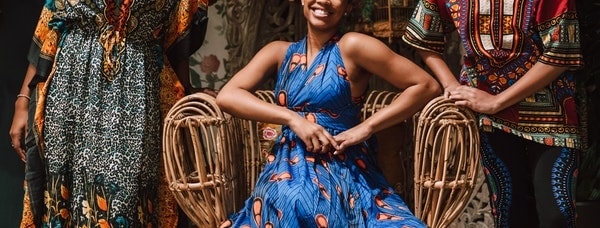
The Visiting Ethiopia and Dress Code for Visitors
When making an Ethiopia packing list, international travelers should choose clothing that is appropriate both for the weather and for what is culturally acceptable in the country.
One of the important things to know about Ethiopian culture is that people are expected to dress a certain way, including foreign visitors. While not as conservative as in some countries, Ethiopian dress generally involves covering shoulders and knees.
In a hot country, this might not seem an easy task; however, by knowing what to expect, it is more than possible. This guide outlines the key items of clothing to pack for Ethiopia to balance staying cool with keeping up an appropriate appearance.
Tourists who are interested in Rastafarianism shouldn’t miss out on a trip to the village during their stay in Ethiopia.
Clothing Tips for Ethiopia
Lightweight fabrics such as cotton, linen, and bamboo will help to keep travelers cool. These will be necessary for most of the country at most times of the year.
The northern parts of the country at high altitudes can be cold at night, especially in winter. For example, for those asking what to wear in Ethiopia in February, a fleece or light jacket is useful to have.
Although winters are fairly dry, there may be some rainfall, so a waterproof jacket and suitable footwear are also advisable.
Blue and black clothing are not recommended in Ethiopia, since these can attract unwanted pests, such as the tsetse fly. Light and neutral colors are ideal.
How Do People Dress in Ethiopia?

Ethiopians tend to dress modestly, often in traditional dress. The country is still very conservative, although Addis Ababa is becoming more westernized.
The country is home to both Christian and Muslim communities, both of whom may consider some forms of western dress inappropriate. It is recommended that visitors dress in a manner that is unlikely to upset the locals.
Women tend to wear long, flowing dresses and skirts, keeping their knees and shoulders covered. This is important for visitors to stick to, since short skirts and sleeveless tops may attract unwanted attention.
Trousers for women are acceptable, but locals are unlikely to dress this way outside of the capital.
Men must also keep their shoulders covered and should not go shirtless. They might be able to get away with wearing t-shirts in more tourist-friendly areas, but as a rule, shirts and long trousers are advised.
Can You Wear Shorts in Ethiopia?
Shorts are only considered acceptable for children, as they are thought to be undignified for grown men and inappropriate for women.
It is advisable to avoid wearing shorts while visiting the country and instead opt for lightweight trousers or a long skirt or dress.
Packing for the Weather in Ethiopia
The conditions in Ethiopia can be very different depending on the region and the season.
Summers are quite wet in much of the country, with June, July, and August experiencing bouts of heavy rainfall. People visiting Ethiopia in summer are advised to bring an umbrella and waterproof clothing.
The altitude of the region is a big factor in what clothes to wear. Parts of the country are almost tropical at around 30°C, while higher elevations can be a little chilly at 10-16°C.
The mountains are particularly cold at night, so visitors staying in these regions should dress to keep warm.
What Should I Pack for Ethiopia?
When traveling to Ethiopia, it is advisable to pack cool, comfortable clothes, since temperatures are high in lowland areas most of the time.
On the other hand, visitors who plan to go up into the Ethiopian highlands, for example to the Simien Mountains National Park, should be prepared for cooler weather and bring extra layers.
When considering what to pack for Ethiopia, the following items of clothing are essential:
- Sun hat
- Sunglasses
- Lightweight walking shoes or sneakers
- Long trousers and long-sleeved tops (made from light fabrics)
- Travel jacket with plenty of pockets
- Sweaters or a fleece
Ethiopia Packing Lists for Women and Men
The following items are essential on any woman’s Ethiopia packing list:
- Long skirt
- Long dresses
- Loose-fitting trousers
- Sarong or Pashina
Women are advised to keep their shoulders and knees covered, particularly in Muslim areas. Sleeveless tops and shorts are not considered acceptable in Ethiopia.
Men should wear the following items while in Ethiopia: Shirts, Long trousers





 |
|  |
|  |
|  |
| 